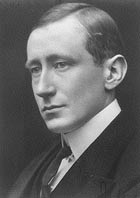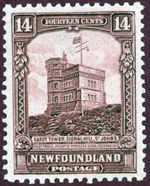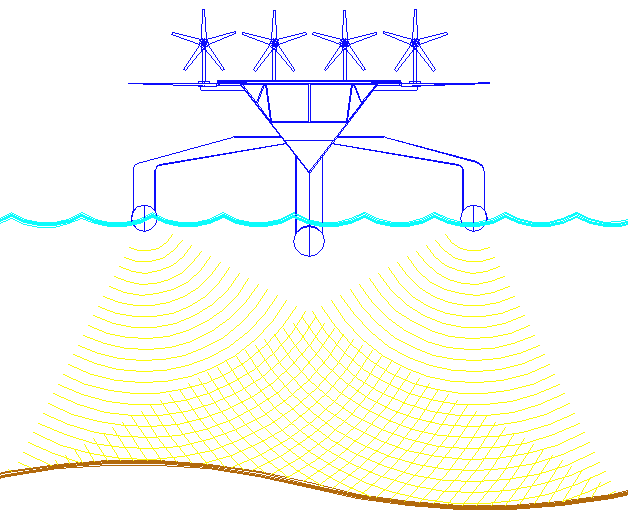|
GUGLIELMO MARCONI 1875-1937
|
|||
|
Guglielmo Marchese Marconi, GCVO was an Italian electrical engineer and Nobel laureate of partially Irish descent, known for the development of a practical wireless telegraphy system commonly known as the "radio". Marconi was President of the Accademia d'Italia and a member of the Fascist Grand Council of Italy.
Birth and early years
Marconi was born near Bologna, Italy, the second son of Giuseppe Marconi, an Italian landowner, and his Irish wife [1], Annie Jameson, granddaughter of the founder of the Jameson & Sons Distillery on 25 April 1874. He was educated in Bologna, Florence and, later, in Livorno.
Guglielmo Marconi
Wireless transmission
Although many scientists and inventors contributed to the invention of wireless telegraphy, including Christopher Smith, Reginald Fessenden, Oliver Lodge Hans Christian Ørsted, Michael Faraday, Heinrich Rudolf Hertz, Jagadis Chandra Bose, Alexander Popov, Nikola Tesla, Thomas Alva Edison, Nathan Stubblefield, and others, Marconi's system achieved widespread use, so he is often credited as the "father of radio." Marconi did use others's patents in the development of his system (such as Karl Ferdinand Braun's innovations). Braun's British patent on tuning was used by Marconi in many of Marconi's tuning patents. Marconi would later admit to Braun himself that he had "borrowed" portions of Braun's work. In the development of radio, the first person to "invent" a modern system of radio was Nikola Tesla. A variety of Tesla's radio frequency systems were demonstrated during the widely known lecture, presented to meetings of the National Electric Light Association in St. Louis, Missouri and the Franklin Institute in Philadelphia.
Transmission and radiation of radio frequency energy was a feature exhibit in the experiments by Tesla and was primarily used for the telecommunication of information.[2] Marconi supporters have stated that Marconi was not aware of the works of Nikola Tesla in the U.S. although the presentation at the Franklin Institute was reported across America and throughout Europe. It is unlikely, though, that Marconi was unaware of Tesla's presentation, "On Light and Other High Frequency Phenomena", in Philadelphia.
Marconi demonstrated the transmission and reception of Morse Code based radio signals over a distance of 2 or more kilometres (and up to 6 kilometres) on Salisbury Plain in England in 1896. Marconi was awarded a patent for Radio communications with British Patent GB12039, "Improvements in transmitting electrical impulses and signals and in apparatus there-for" on 2 July 1897 (sometimes recognised as the World's first patent in radio telecommunication). In July of 1897, Marconi formed the London based Wireless Telegraph Trading Signal Company (later renamed the Marconi Wireless Telegraph Company), which opened the World's first "wireless" factory in Hall Street, Chelmsford, England in 1898, employing around 50 people.
Cabot Tower on Signal Hill, where Marconi received the first wireless trans-Atlantic message
Marconi made a wireless transmission across water 13 May 1897 from Lavernock Point, South Wales to Flat Holm island. He made a wireless transmission across the water from Ballycastle (Northern Ireland) to Rathlin Island in 1898. He reportedly received the first trans-Atlantic radio signal on 12 December 1901 at Signal Hill in St John's, Newfoundland (now in Canada) using a 400-foot kite-supported antenna for reception.
This was surprising at the time as it was thought by some in the mainstream that a radio signal could only be transmitted in the line of sight. The transmitting station in Poldhu, Cornwall used a spark-gap transmitter to produce a signal with a frequency of approximately 500 kHz and a power of 100 times more than any radio signal previously produced (a maximum time-averaged power of 35 kilowatts, but with a peak pulse power of several tens of megawatts.[3]) The message received was three dots, the Morse code for the letter S. To reach Newfoundland the signal would have to bounce off the ionosphere twice. Dr Jack Belrose has recently contested this, however, based on theoretical work as well as an actual reenactment of the experiment; he believes that Marconi heard only random atmospheric noise and mistook it for the signal. Many other engineers agree with Jack Belrose that the 1901 bridging of the Atlantic never took place. However, equally, a significant body of intelligent scientific thought has examined the way in which this signal could have traversed the Atlantic. Of these, the most coherent (not entirely and accidental pun) is presented in a paper by Mackeand and Cross, during the Institute of Electrical Engineers (UK) Conference in 1995. While the fundamental frequency was not suitable for such a transmission, the aforementioned authors have demonstrated how high frequency harmonics of the Poldhu signal could have been received with the primitive diode detector then in use. Subsequently, ship board experiments were to comprehensively demonstrate that receiving signals over the distance claimed in 1901 was possible even when employing a far less sensitive coherer based method of detection.
Marconi then moved to longer waves (lower frequencies). However there is little doubt that by February 1902, Marconi's apparatus was reliably receiving complete messages at 2500 km (1550 miles) at night and 1100 km (700 miles) by day, and usually picked up a special test signal at 3400 km (2100 miles), the distance of Poldhu to Newfoundland. By 1903, the Marconi Company was carrying regular transatlantic news transmissions.
In 1901, Marconi built a station near Wellfleet, Massachusetts. It was first called CC (Cape Cod), then MCC (Marconi Cape Cod) and finally WCC when the US government issued "W" call letters to stations east of the Mississippi. In 1903, from this station, Marconi sent the famous message from the President of the US to the King of the United Kingdom. This message was sent directly from Welfleet to England, without being relayed via the Marconi station at Glace Bay, Nova Scotia. During WWI, all radio stations went off the air. When the war was over, Marconi had planned to move this station to Chatham, mainly because the ocean had eroded the cliff where the Welfleet station stood. Reportedly, the U.S. Government was worried about foreign ownership of radio stations.
Later years and death
On 16 March 1905 he married Beatrice O'Brien, daughter of Edward Donough O'Brien, 14th Baron Inchiquin, Ireland. They had three daughters (one of whom lived only a few weeks), and one son. Marconi and O'Brien later divorced. Marconi achieved fully reliable transatlantic communication in 1907. He was the founder of the Marconi Company and the joint 1909 recipient of the Nobel Prize in Physics along with Karl Ferdinand Braun. During World War I, Marconi was in charge of the Italian wireless service. Marconi developed shortwave secret communication transmissions during this time.
In 1914, Marconi built WCC in Chatham, Massachusetts, on Cape Cod. It would become the busiest ship to shore radio station for most of the twentieth century. WCC was sold during the breakup of RCA in the 1990s to MCI, and was finally shut down in 1997. In its final years on the Cape, WCC was operated remotely over a fiber optic link right down to such details as antenna adjustments and frequency tuning from California's KPH. It ended life on Cape Cod with a two-man crew. The callsign WCC is still heard over the radio from Globe Wireless's automated radio-based email system from a new location in Maryland. On November 20, 1919 the Marconi Company of America was merged with the Radio Corporation of America.
In 1920 Marconi's Chelmsford factory was the location of the first officially publicised sound broadcasts in the UK, one of them featuring Dame Nellie Melba. In 1922 the World's first regular wireless broadcasts for entertainment commenced from the Marconi Research Centre at Writtle near Chelmsford. Marconi joined the Italian Fascist party in 1923. Benito Mussolini made Marconi President of the Accademia d'Italia, which also made him a member of the Fascist Grand Council. He made Fascist speeches on the radio in a number of countries. On 15 June 1927, he married Maria Cristina Bezzi-Scali; Mussolini was best man. Their daughter was named Maria Elettra Elena Anna Marconi. Two years later, he was created a marchese (marquess) by King Victor Emmanuel III. Marconi died in Rome on 20 July 1937. As a tribute to Marconi, radio stations throughout the world observed two minutes of radio silence.
Honours
Patents
British Patents
US Patents
Bibliography
LINKS:
INVENTORS A - Z
The ultimate Robot Boat. Solarnavigator uses an advanced SWASSH hull as the platform to mount the world's first autonomous circumnavigation. A successful expedition could pave the way for improved safety at sea. Marconi would have applauded the use of radio for this project.
|
|||
|
This website is copyright © 1991- 2013 Electrick Publications. All rights reserved. The bird logo and names Solar Navigator and Blueplanet Ecostar are trademarks ™. The Blueplanet vehicle configuration is registered ®. All other trademarks hereby acknowledged and please note that this project should not be confused with the Australian: 'World Solar Challenge'™which is a superb road vehicle endurance race from Darwin to Adelaide. Max Energy Limited is an educational charity working hard to promote world peace.
|
|||
|
AUTOMOTIVE | BLUEPLANET BE3 | ELECTRIC CARS | ELECTRIC CYCLES | SOLAR CARS | SOLARNAVIGATOR |


